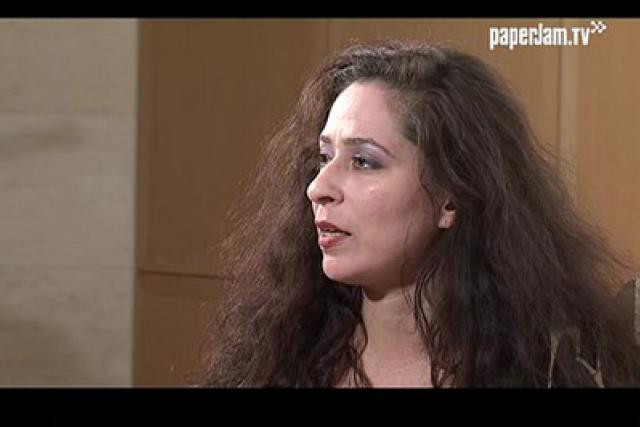Speaking at the latest paperJam Business Club Afterwork Talk, Professor Diana Derval addressed the need for companies to seize new opportunities not only to reach the public, but also to ensure that their target audience is receptive to their message. The head of Derval Research, based in Amsterdam, says studies have shown that consumers have proved extremely receptive to advertising while waiting. Indeed, what Derval calls the “memory coefficient” of receptive consumers who see an advertisement while waiting can sometimes exceed 50%, whereas traditional advertising – be it on broadcast media, the internet or billboards – seldom reaches 15%.
Derval’s talk at Mudam, as part of paperJam Business Club’s Marketing & Communication Cycle, was titled “Wait Marketing: Est-ce le bon moment?”. The “moment,” Derval says, is the missing sixth “M” in Philip Kotler’s famous “Five Ms” of advertising - mission, message, media, money, and measurement. She used the example of one of her customers, travel website ViaMichelin, to illustrate how targeting the right moment leads to results. “Most people plan their weekends on a Monday when they return to work and want something to look forward to, so for ViaMichelin we would be wasting our time advertising on a Thursday or Friday,” she explained.
Other Derval customers include car manufacturers Jaguar and Toyota, two companies with vastly different target audiences for certain products. Derval explains that for Jaguar’s XK series, the attention of the target audience of businessmen (and women) could by grabbed by placing advertisements on the websites they would be likely to visit between meetings – specifically the Financial Times and Les Echos. The result? A click rate of 45.1% compared to an average of 0.5% for web advertising.
For Toyota’s Verso, a family car, the target audience was clearly mothers. They traditionally watch less television than the rest of the family, but the vital question was: where do they spend time waiting? The answer: doctor’s waiting rooms, where research has shown that the average waiting time can be anything between 20 and 52 minutes. To reach that target audience, screens running advertisement information for the Verso were placed in one corner of waiting rooms – crucially allowing a choice to watch or not. But significantly, 27% of those who did watch the advertisement in the waiting room remembered the car, compared to just 17% who watched it on the TV in their home environment.
Receptiveness and respect
“Receptiveness is what really counts, because consumers these days are so well informed,” says Derval. But if customers are well informed, it is also imperative that businesses learn what they want. The intrusive traditional telephone or often poorly timed street questionnaires are hardly appropriate tools for an innovative company like DervalResearch. No, the market researcher has created a Second Life Interview Corner (SLIC) together with software provider Global Market Insite (GMI) at which “residents” in the virtual world can be polled on a variety of topics. These interviews have been used by DervalResearch to create distinctive Persona - fictional Second Life avatars based on real-life data and research – with a wide variety of lifestyles and interests who can help define target audiences for specific products.
These Persona take into account a wide range of criteria. For a start, they eschew any idea that marketing can target specific age groups – Derval points out that Ozzy Osbourne and Prince Charles are born just three weeks apart, but would be in totally different target demographics. The Persona are defined by their job, sex, interests, activities, favourite brands and even what drives and motivates them
This all ties in with one of the principle philosophies behind Derval’s Wait Marketing concept, which is that clients must be shown respect. So, it is not only important to have some sort of congruence between the media and the message – for example, advertising for a beer brand on a bar table – but also to think strongly about the affinity between brand and consumer and also to catch the customer in a positive frame of mind. A well-thought out Wait Marketing campaign can fulfil all three criteria, Derval argues, and thus enhance advertising effectiveness.
See the Video interview of Diana Derval HERE.
